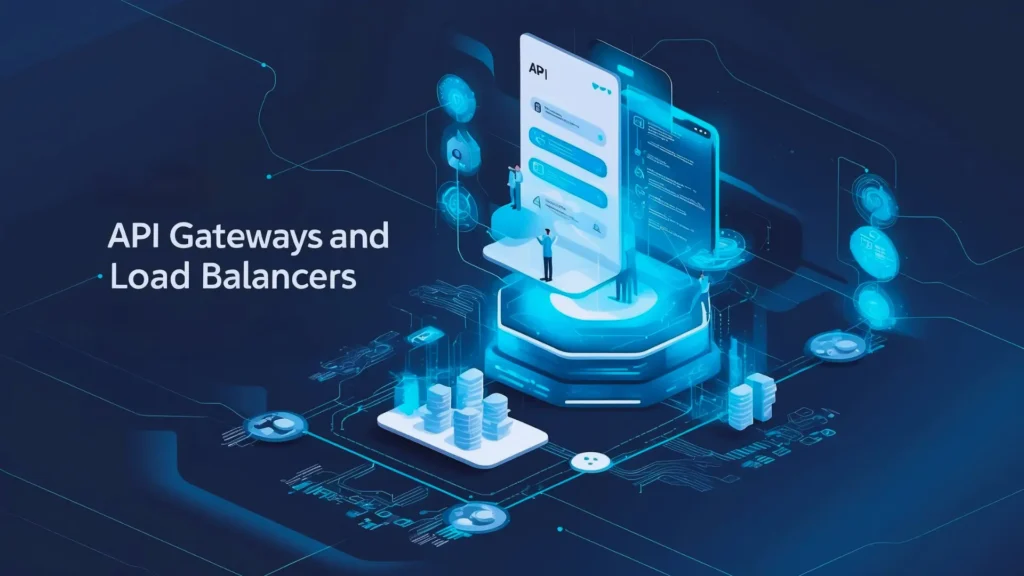In the ever-evolving landscape of system design, two critical components often get confused: API gateways and load balancers. Although they serve distinct purposes, their roles are crucial in ensuring the performance, scalability, and security of applications. Let’s break down what each does, how they differ, and why you need them both.
To learn more about the powerful use cases of API gateways, visit this article.
What is an API Gateway?
An API gateway acts as a single entry point for all client requests to your backend services. It’s like the concierge desk in a hotel, directing guests to the correct room, providing keys, and verifying their identities. Here’s what an API gateway typically handles:
- Request Routing: It directs incoming API requests to the appropriate backend services based on the request’s URL path, headers, or query parameters.
- Authentication and Authorization: It validates user credentials and permissions before allowing access to backend services.
- Rate Limiting and Throttling: It controls the number of requests a user can make within a given timeframe to prevent abuse.
- Data Aggregation: It combines responses from different services into a single response to simplify client-side processing.
- Caching: It stores frequently requested data to reduce load on backend services and speed up response times.
Image Source: aws.amazon
What is a Load Balancer?
A load balancer, on the other hand, distributes incoming network or application traffic across multiple servers. Think of it as a traffic cop at a busy intersection, ensuring vehicles (data) flow smoothly without congestion. Here’s what a load balancer typically does:
Image source: aws.amazon
- Traffic Distribution: It ensures incoming requests are evenly distributed across multiple servers to prevent any single server from being overwhelmed.
- Health Checks: It continuously monitors server health and routes traffic away from servers that are down or underperforming.
- Failover: It redirects traffic to healthy servers in the event of a server failure, ensuring high availability.
- SSL Termination: It decrypts SSL traffic, reducing the burden on backend servers.
Key Differences Between API Gateway and Load Balancer
Now that we have an understanding of what API gateways and load balancers do, let’s highlight some key differences:
| Core Functionality | API Gateway: Primarily manages API requests, offering advanced routing, rate limiting, authentication, data aggregation, and caching. |
| Load Balancer: Focuses on distributing network traffic evenly across multiple servers to ensure high availability and reliability. | |
| Use Cases | API Gateway: Suitable for microservices architectures where different services need to be accessed via APIs. |
| Load Balancer: Ideal for applications requiring high traffic distribution across multiple servers, such as web hosting environments. | |
| Security Features | API Gateway: Provides built-in security features like authentication, authorization, and rate limiting to prevent abuse and unauthorized access. |
| Load Balancer: Typically provides basic security functions like SSL termination but lacks the robust security features of an API gateway. | |
Data Handling | API Gateway: Can aggregate data from multiple services into a single response, streamlining client-side data processing. |
| Load Balancer: Routes requests to the appropriate server but does not typically modify or aggregate data. |
Why You Need Both in a Modern Application
In a modern application architecture, especially one based on microservices, both API gateways and load balancers are essential. Here’s why:
- Enhanced Performance: A load balancer ensures that no single server gets overwhelmed, distributing traffic efficiently. Meanwhile, an API gateway can cache responses and reduce the load on backend services.
- Improved Security: An API gateway adds an extra layer of security by authenticating requests and managing rate limiting. The load balancer can offload SSL termination, freeing up backend resources.
- Scalability: Together, they help your application scale horizontally by adding more servers behind the load balancer and more services managed by the API gateway.
- Simplified Client-Side Code: Data aggregation by the API gateway means that clients can make a single request and receive a comprehensive response, reducing complexity on the client side.
Conclusion
Understanding the distinct yet complementary roles of API gateways and load balancers is paramount for anyone involved in modern system design. An API gateway is your frontline defense, managing API requests with precision, while a load balancer ensures traffic flows smoothly across your server landscape.
Harnessing the power of both tools can significantly enhance your application’s performance, security, and scalability. So, whether you’re building a robust microservices architecture or optimizing a high-traffic application, remember that both an API gateway and a load balancer are indispensable components of a resilient system design.
FAQ
What is the Difference Between a Load Balancer and an Application Gateway?
A load balancer distributes incoming network or application traffic across multiple servers to optimize resource use and ensure high availability. An application gateway, on the other hand, operates at the application layer, providing advanced features such as SSL offloading, deep packet inspection, and web application firewall (WAF) functionality. Essentially, load balancers enhance performance and availability, while application gateways focus on security and application-specific routing.
What is the Difference Between Google API Gateway and Load Balancer?
Google API Gateway is a managed service that allows you to create, secure, and monitor APIs with features like rate limiting, authentication, and API monitoring. In contrast, a load balancer distributes incoming traffic across multiple servers or instances to ensure high availability and performance. While Google API Gateway excels in API management and security, a load balancer focuses on traffic distribution and reliability.
How is API Gateway Different from Load Balancer?
An API Gateway manages and secures APIs with capabilities like rate limiting, authentication, and traffic management. A load balancer, however, distributes incoming traffic across multiple servers to optimize performance and availability. API Gateways are ideal for fine-tuned API control and security, whereas load balancers are best for distributing general traffic to ensure consistent performance and uptime.



